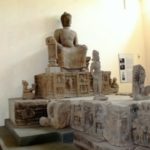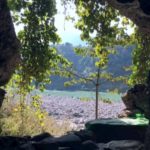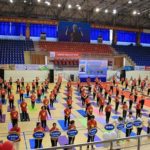 |
In a significant stride for India’s space exploration endeavors, the Indian Space Research Organization (ISRO) successfully maneuvered its Solar Mission Aditya-L1 into the Halo Orbit, garnering praise from NASA Scientist Amitabha Ghosh. Ghosh, reflecting on India’s scientific achievements, said, “India is right now in most of the areas where it’s scientifically important. And then there is ‘Gaganyaan,’ which is the human space flight part, that is in the works right now. So, it’s been a tremendous stride for the last 20 years. Going from not having a planetary science program to where we stand today, and particularly after the success of Aditya, it’s been a very remarkable journey.”
In a significant scientific milestone, Indian Space Research Organization (ISRO) on Saturday injected Aditya-L1 spacecraft – the first dedicated solar mission – into its final destination orbit. Prime Minister Narendra Modi and Minister of State for Science and Technology Jitendra Singh were among leaders who hailed the achievement.
Aditya-L1 has reached Lagrange Point L1, about 1.5 million km from Earth. The PSLV-C57.1 rocket carrying the Aditya-L1 orbiter lifted off successfully from the Satish Dhawan Space Centre in Sriharikota, Andhra Pradesh, in September.
The successful launch of the maiden solar mission of the Indian Space Research Organization (ISRO) came on the heels of the historic lunar landing mission — Chandrayaan-3. Prime Minister Narendra Modi said India will continue to pursue new frontiers of science for the benefit of humanity.
“India creates yet another landmark. India’s first solar observatory Aditya-L1 reaches its destination. It is a testament to the relentless dedication of our scientists in realizing among the most complex and intricate space missions. I join the nation in applauding this extraordinary feat. We will continue to pursue new frontiers of science for the benefit of humanity,” he said in a post on X. Aditya L1 has seven different payloads on board, to conduct a detailed study of the sun, four of which will observe the light from the sun and the other three will measure in-situ parameters of the plasma and magnetic fields.
The largest and technically most challenging payload on Aditya-L1 is the Visible Emission Line Coronagraph or VELC. VELC was integrated, tested, and calibrated at the Indian Institute of Astrophysics’ CREST (Centre for Research and Education in Science Technology) campus in Hosakote in collaboration with ISRO. This strategic location will enable Aditya-L1 to continuously observe the sun without being hindered by eclipses or occultation, allowing scientists to study solar activities and their impact on space weather in real-time.
Also, the spacecraft’s data will help identify the sequence of processes that lead to solar eruptive events and contribute to a deeper understanding of space weather drivers. Major objectives of India’s solar mission include the study of the physics of solar corona and its heating mechanism, the solar wind acceleration, coupling and dynamics of the solar atmosphere, solar wind distribution and temperature anisotropy, and origin of Coronal Mass Ejections (CME) and flares and near-earth space weather. (ANI)








